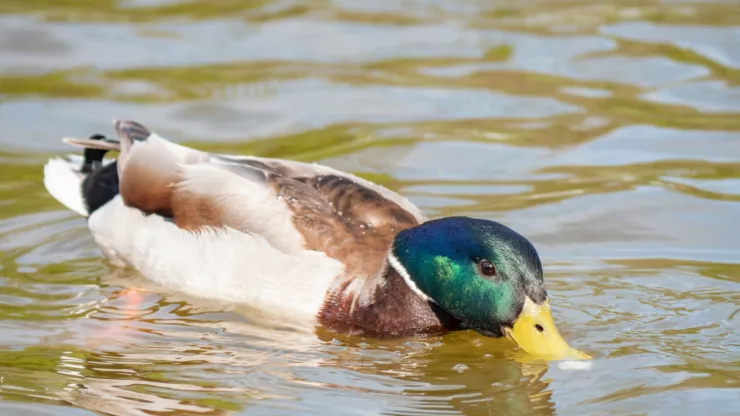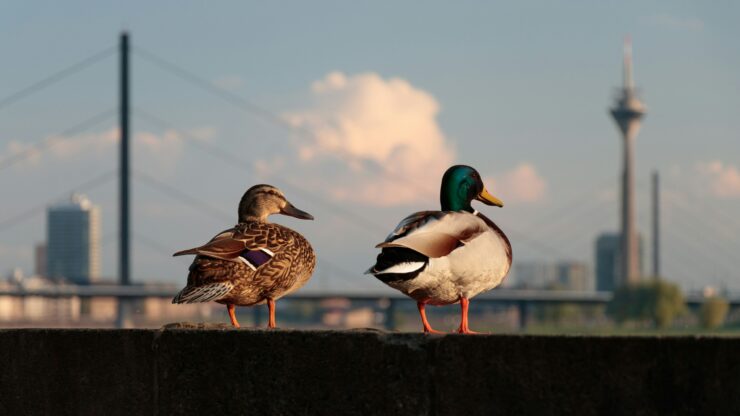Urban Wildlife and Human Well-being: The Nature Connection
As urban areas continue to expand and encroach on natural habitats, it is important to consider the impact on wildlife and how it affects human well-being.
Urban wildlife refers to animals that live in or around cities, such as squirrels, birds, raccoons, and even coyotes.
In this article, we will explore the importance of urban wildlife, its role in human well-being, the challenges of managing it, and how to foster a connection with it.
Jump to Section
Introduction
As cities continue to grow and expand, it is important to consider the impact of urban development on wildlife.
Urban wildlife plays a crucial role in maintaining a balance in the ecosystem, and its presence can have a positive impact on human well-being.
However, urbanization also poses challenges in managing wildlife and ensuring that it does not pose a threat to human safety.
In this article, we will explore the importance of urban wildlife and its connection to human well-being.
The Importance of Urban Wildlife and Human Well-being
Urban wildlife refers to the animals that live in or around cities, and they play a vital role in maintaining the balance of the ecosystem.
Wildlife helps to pollinate plants, control pest populations, and maintain biodiversity.
In addition, the presence of urban wildlife has been shown to have a positive impact on human well-being.
Studies have found that exposure to nature and wildlife can reduce stress, improve mood, and increase physical activity.
Urban Wildlife and Its Role in Human Well-being
The Positive Impact of Urban Wildlife on Mental Health
The presence of urban wildlife has been shown to have a positive impact on mental health.
Exposure to nature and wildlife has been linked to reduced stress, improved mood, and increased cognitive function.
In addition, it has been found that people who live near urban green spaces report higher levels of life satisfaction and happiness.
The Benefits of Urban Green Spaces
Urban green spaces, such as parks and gardens, provide important habitats for urban wildlife and offer a range of benefits to human well-being.
They provide opportunities for physical activity, social interaction, and relaxation.
In addition, they help to improve air quality, reduce urban heat island effect, and absorb stormwater runoff.
The Connection Between Urban Wildlife and Physical Health
In addition to its positive impact on mental health, urban wildlife also plays a role in physical health.
Studies have found that exposure to nature can lead to increased physical activity, which can help to reduce the risk of obesity, diabetes, and heart disease.
In addition, urban green spaces can help to improve air quality and reduce the risk of respiratory illnesses.
The Challenges of Urban Wildlife Management
Managing urban wildlife poses a range of challenges, from overpopulation to conflicts with humans.
It is important to find sustainable solutions to these challenges to ensure the health and safety of both wildlife and humans.
Overpopulation and Its Effects on the Ecosystem
Urbanization often leads to a decrease in natural habitats, which can result in overpopulation of certain species. Overpopulation can have negative effects on the ecosystem, such as competition for resources and the spread of disease.
It is important to find ways to manage overpopulation in a sustainable manner.
Conflicts Between Humans and Wildlife
As urban areas continue to expand, conflicts between humans and wildlife are becoming more common. For example, raccoons may raid garbage cans, and coyotes may prey on pets.
It is important to find ways to manage these conflicts in a humane manner that ensures the safety of both humans and wildlife.
The Importance of Sustainable Solutions
To ensure the health and safety of both wildlife and humans, it is important to find sustainable solutions to the challenges of managing urban wildlife.
This includes finding ways to manage overpopulation, preventing conflicts with humans, and promoting coexistence between humans and wildlife.
How to Foster a Connection with Urban Wildlife
Fostering a connection with urban wildlife can help to improve human well-being and promote conservation efforts.
There are several ways to do this, including citizen science, eco-tourism, and community education.
Encouraging Citizen Science and Conservation Efforts
Citizen science is a way for members of the community to participate in scientific research and conservation efforts.
This can include monitoring wildlife populations, collecting data on habitat use, and participating in habitat restoration projects.
Promoting Eco-Tourism in Urban Areas
Eco-tourism offers opportunities for people to explore and appreciate urban wildlife while also supporting conservation efforts.
Eco-tourism activities can include birdwatching, wildlife photography, and guided nature walks.
Educating Communities on the Benefits of Urban Wildlife
Educating communities on the benefits of urban wildlife can help to foster a connection with wildlife and promote conservation efforts.
This can include educating people on the importance of biodiversity, the role of urban wildlife in maintaining a healthy ecosystem, and the positive impact of nature on human well-being.
Conclusion
The Importance of Balancing Urban Development and Nature Conservation
As cities continue to grow and expand, it is important to find ways to balance urban development and nature conservation.
Urban wildlife plays a vital role in maintaining the balance of the ecosystem, and its presence has a positive impact on human well-being.
By finding sustainable solutions to the challenges of managing urban wildlife and fostering a connection with it, we can promote conservation efforts and ensure a healthy and vibrant urban environment.
FAQ
What is urban wildlife?
Urban wildlife refers to the animals that live in or around cities, such as squirrels, birds, raccoons, and coyotes.
What is the role of urban wildlife in human well-being?
Urban wildlife plays a role in maintaining the balance of the ecosystem and has a positive impact on human well-being.
Exposure to nature and wildlife has been linked to reduced stress, improved mood, and increased physical activity.
What are the challenges of managing urban wildlife?
Managing urban wildlife poses a range of challenges, from overpopulation to conflicts with humans.
It is important to find sustainable solutions to these challenges to ensure the health and safety of both wildlife and humans.
How can I foster a connection with urban wildlife?
Fostering a connection with urban wildlife can be done through citizen science, eco-tourism, and community education. These activities can help to promote conservation efforts and improve human well-being.
I’m a nature enthusiast and creator of Metro Wilds and have spent years exploring the great outdoors.
With a passion for environmental conservation and sustainability, I have dedicated my career to writing about the beauty and wonders of nature, as well as the threats facing our planet.
Contact me at [email protected] for assistance.





